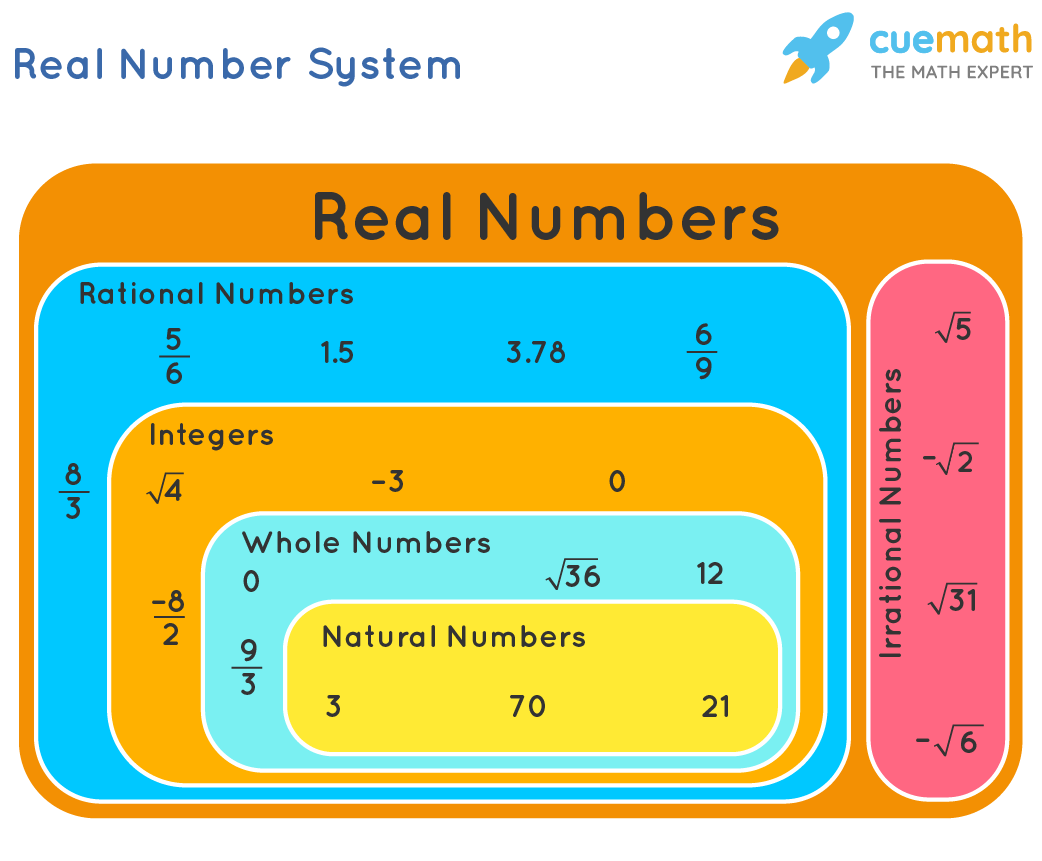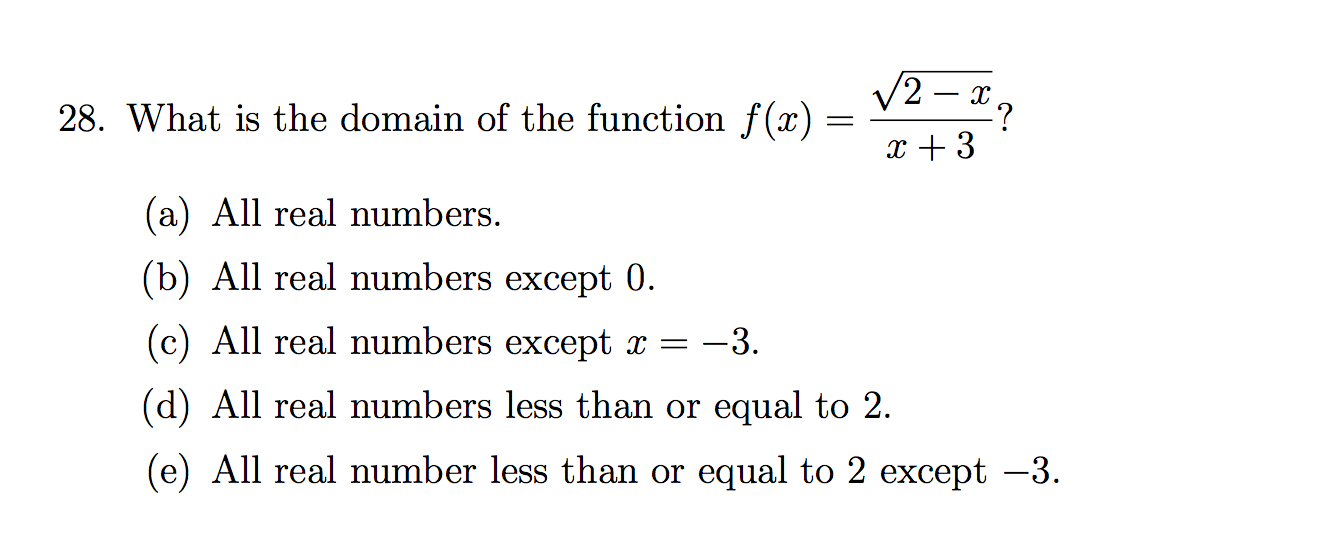What Is The Domain Of All Real Numbers
What Is The Domain Of All Real Numbers - The domain of all real numbers is the. One way to determine this is to. Learn how to find the domain and range of a function using words, interval notation, and set notation. For the quadratic function \(f(x)=x^2\), the domain is all real numbers since the horizontal extent of the graph is the whole. Algebraically, the domain is the set of all real numbers except zero, since the denominator can not equal zero.
Learn how to find the domain and range of a function using words, interval notation, and set notation. The domain of all real numbers is the. For the quadratic function \(f(x)=x^2\), the domain is all real numbers since the horizontal extent of the graph is the whole. One way to determine this is to. Algebraically, the domain is the set of all real numbers except zero, since the denominator can not equal zero.
One way to determine this is to. Algebraically, the domain is the set of all real numbers except zero, since the denominator can not equal zero. Learn how to find the domain and range of a function using words, interval notation, and set notation. The domain of all real numbers is the. For the quadratic function \(f(x)=x^2\), the domain is all real numbers since the horizontal extent of the graph is the whole.
Introduction To Real Numbers — Mathematics CBSE, Class, 46 OFF
Algebraically, the domain is the set of all real numbers except zero, since the denominator can not equal zero. One way to determine this is to. The domain of all real numbers is the. For the quadratic function \(f(x)=x^2\), the domain is all real numbers since the horizontal extent of the graph is the whole. Learn how to find the.
[Solved] The domain of the graph of this equation is all real numbers
Algebraically, the domain is the set of all real numbers except zero, since the denominator can not equal zero. One way to determine this is to. Learn how to find the domain and range of a function using words, interval notation, and set notation. The domain of all real numbers is the. For the quadratic function \(f(x)=x^2\), the domain is.
Solved Domain All real numbersRange All real
One way to determine this is to. Algebraically, the domain is the set of all real numbers except zero, since the denominator can not equal zero. For the quadratic function \(f(x)=x^2\), the domain is all real numbers since the horizontal extent of the graph is the whole. Learn how to find the domain and range of a function using words,.
Real Numbers Definition, Properties, and Examples Cuemath
For the quadratic function \(f(x)=x^2\), the domain is all real numbers since the horizontal extent of the graph is the whole. The domain of all real numbers is the. One way to determine this is to. Learn how to find the domain and range of a function using words, interval notation, and set notation. Algebraically, the domain is the set.
[Solved] The domain of the graph of this equation is all real numbers
Algebraically, the domain is the set of all real numbers except zero, since the denominator can not equal zero. One way to determine this is to. The domain of all real numbers is the. Learn how to find the domain and range of a function using words, interval notation, and set notation. For the quadratic function \(f(x)=x^2\), the domain is.
[College Algebra Domain and All Real Numbers] The question before this
The domain of all real numbers is the. One way to determine this is to. For the quadratic function \(f(x)=x^2\), the domain is all real numbers since the horizontal extent of the graph is the whole. Learn how to find the domain and range of a function using words, interval notation, and set notation. Algebraically, the domain is the set.
Solved What are the domain and range of the exponential
The domain of all real numbers is the. For the quadratic function \(f(x)=x^2\), the domain is all real numbers since the horizontal extent of the graph is the whole. Learn how to find the domain and range of a function using words, interval notation, and set notation. Algebraically, the domain is the set of all real numbers except zero, since.
Types Of Real Numbers
One way to determine this is to. For the quadratic function \(f(x)=x^2\), the domain is all real numbers since the horizontal extent of the graph is the whole. The domain of all real numbers is the. Algebraically, the domain is the set of all real numbers except zero, since the denominator can not equal zero. Learn how to find the.
[Solved] The domain of the function f(a) = is all real numbers x except
One way to determine this is to. The domain of all real numbers is the. Learn how to find the domain and range of a function using words, interval notation, and set notation. Algebraically, the domain is the set of all real numbers except zero, since the denominator can not equal zero. For the quadratic function \(f(x)=x^2\), the domain is.
Solved What is the domain of the function f(x) = squareroot
Algebraically, the domain is the set of all real numbers except zero, since the denominator can not equal zero. The domain of all real numbers is the. Learn how to find the domain and range of a function using words, interval notation, and set notation. One way to determine this is to. For the quadratic function \(f(x)=x^2\), the domain is.
One Way To Determine This Is To.
Learn how to find the domain and range of a function using words, interval notation, and set notation. The domain of all real numbers is the. Algebraically, the domain is the set of all real numbers except zero, since the denominator can not equal zero. For the quadratic function \(f(x)=x^2\), the domain is all real numbers since the horizontal extent of the graph is the whole.



![[College Algebra Domain and All Real Numbers] The question before this](https://i.redd.it/ag0ha2unukm71.png)


